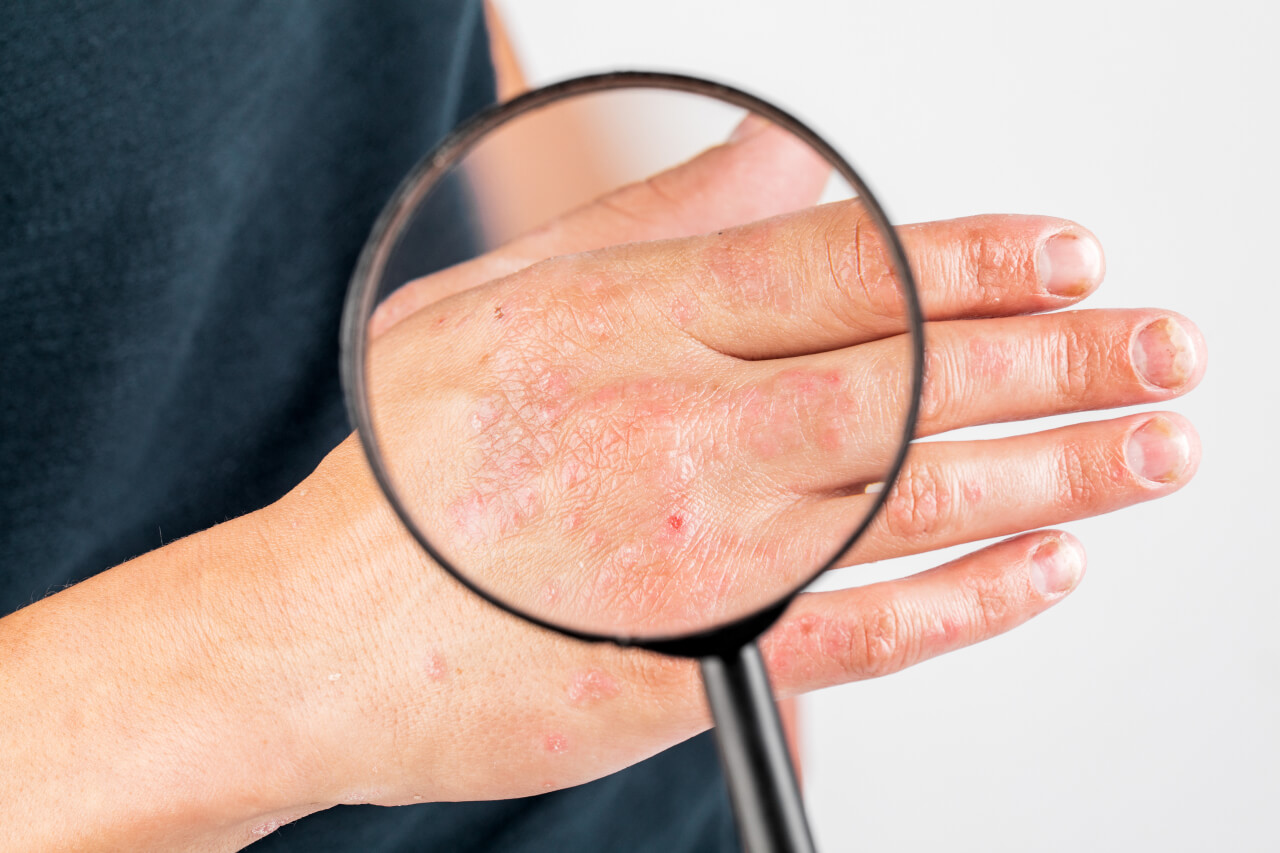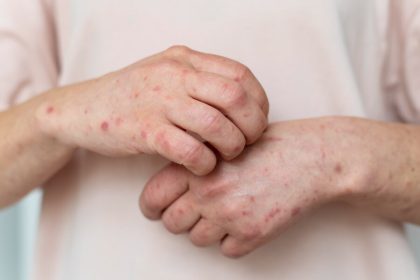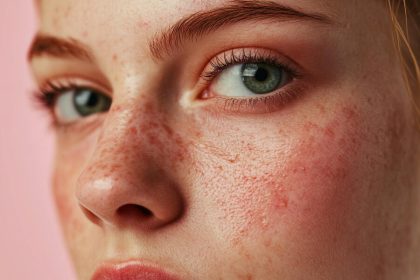If you or someone you know is affected by this common skin condition, you’re in the right place. Throughout this comprehensive article, we will explore the ins and outs of seborrheic dermatitis, shedding light on its causes, symptoms, and available treatment options.
Seborrheic dermatitis is a chronic inflammatory skin condition that primarily affects areas rich in oil glands, such as the scalp, face, and chest. It is characterized by redness, itching, and the development of yellow or white flakes, often referred to as dandruff. While it is a harmless and non-contagious condition, seborrheic dermatitis can cause discomfort, self-consciousness, and impact a person’s overall quality of life.
To truly understand seborrheic dermatitis, we will explore its underlying causes. Although the exact cause remains unknown, researchers believe that a combination of genetic and environmental factors, including an overgrowth of yeast called Malassezia, play a role in its development. We will delve into these factors, providing you with a deeper understanding of the condition’s origins.
Recognizing the symptoms of seborrheic dermatitis is crucial for early diagnosis and appropriate treatment. We will delve into the signs to look out for, such as redness, flaking, and itching, while highlighting the areas commonly affected. Understanding the symptoms can help individuals seek timely medical attention and avoid potential complications.
Treatment options for seborrheic dermatitis will also be explored extensively. From over-the-counter remedies to prescription medications, we will discuss various approaches aimed at relieving symptoms, reducing inflammation, and managing the condition effectively. Additionally, we will touch upon self-care practices and lifestyle changes that can complement medical treatments and help manage seborrheic dermatitis in the long term.
Seborrheic Dermatitis
Seborrheic dermatitis, also known as seborrheic eczema or dandruff, is a common chronic skin condition. It affects the scalp, face, and other areas of the body with a high concentration of oil glands. Seborrheic dermatitis is characterized by red, itchy, and flaky skin.
The exact cause of seborrheic dermatitis is not fully understood, but several factors contribute to its development. One of the main factors is the overgrowth of a naturally occurring fungus called Malassezia. Other factors may include hormonal imbalances, excess oil production, stress, certain medical conditions (such as Parkinson’s disease and HIV), and certain medications.
Seborrheic dermatitis commonly occurs in infants (known as cradle cap) and adults. In infants, it typically appears as crusty, yellowish or whitish patches on the scalp, forehead, ears, and sometimes in the diaper area. In adults, it primarily affects areas with a higher density of sebaceous glands, such as the scalp, eyebrows, sides of the nose, behind the ears, and the center of the chest.
Symptoms
The symptoms of seborrheic dermatitis can vary from mild to severe and may include:
Redness and inflammation
The affected areas of the skin can appear red, irritated, and inflamed, often accompanied by itching or discomfort.
Flaky or greasy skin
Seborrheic dermatitis can result in either dry, flaky skin or greasy, oily patches. The scales may appear yellowish or white, and they often peel off or accumulate on the scalp, face, or other affected areas.
Itching or burning sensation
Itching is a common symptom of seborrheic dermatitis, which can be mild to severe. The urge to scratch the affected areas can intensify the inflammation and potentially lead to further skin damage.
Scalp symptoms
Seborrheic dermatitis on the scalp, also known as dandruff, can cause excessive flaking of the skin. This flaking may be accompanied by itchiness and a feeling of tightness on the scalp.
Formation of crusts or scales
In some cases, seborrheic dermatitis can lead to the formation of thick, greasy, yellowish or brownish crusts or scales on the affected areas.
Affected skin areas
Seborrheic dermatitis commonly affects the scalp, eyebrows, eyelids, sides of the nose, and the skin folds around the ears, but it can also occur on the chest, upper back, and other areas with oil glands.
It is important to note that these symptoms may come and go, with periods of flare-ups and remission.
Causes
The exact causes of seborrheic dermatitis are still not fully understood. However, there are several factors that are believed to contribute to the development of this common skin condition. These include:
- Overproduction of sebum: Seborrheic dermatitis often occurs in areas of the body that have a high concentration of sebaceous glands, such as the scalp, face, and chest. An overproduction of sebum (an oily substance secreted by the sebaceous glands) can contribute to the development of seborrheic dermatitis.
- Malassezia yeast: Malassezia is a type of yeast that naturally resides on the skin. However, in individuals with seborrheic dermatitis, it is believed that there is an abnormal response to the presence of Malassezia. This can lead to an inflammatory response, causing symptoms such as redness, itching, and flaking.
- Genetic factors: There may be a genetic predisposition to seborrheic dermatitis, as it tends to run in families. Certain genetic variations may increase an individual’s susceptibility to the condition.
- Hormonal factors: Hormonal fluctuations, such as those that occur during puberty, pregnancy, or in individuals with hormonal disorders, may contribute to the development or worsening of seborrheic dermatitis.
- Weakened immune system: A compromised immune system, either due to certain medical conditions (e.g., HIV/AIDS) or medications that suppress immune function, can increase the risk of developing seborrheic dermatitis.
- Environmental factors: Certain environmental factors, such as cold weather, dry climates, or stress, may trigger or worsen symptoms of seborrheic dermatitis.
Treatment
The treatment of seborrheic dermatitis aims to manage and control the symptoms associated with the condition. While there is no cure for seborrheic dermatitis, various treatment approaches can help alleviate symptoms and prevent flare-ups. Here are some commonly recommended treatment options:
Topical antifungal agents
Seborrheic dermatitis is believed to be associated with a yeast called Malassezia. Topical antifungal agents, such as ketoconazole, selenium sulfide, or pyrithione zinc, can help reduce the growth of yeast and alleviate symptoms. These antifungal agents are often available in the form of shampoos, creams, or ointments.
Topical corticosteroids
In cases where symptoms are more severe or persistent, topical corticosteroids may be prescribed. Mild to moderate strength corticosteroids can help reduce inflammation and itching. However, long-term use of strong corticosteroids on the face should be avoided due to the risk of skin thinning and other side effects.
Antifungal oral medications
In severe cases or when topical treatments are ineffective, oral antifungal medications may be prescribed by a healthcare professional. These medications, such as itraconazole or fluconazole, are taken orally for a specific duration as directed by the healthcare provider.
Medicated shampoos
Seborrheic dermatitis affecting the scalp often responds well to medicated shampoos containing antifungal agents, such as ketoconazole, selenium sulfide, or coal tar. These shampoos should be used as directed and massaged into the scalp to remove scales and reduce inflammation. Regular use of these shampoos can help prevent flare-ups.
Regular Cleansing and Shampooing
Gentle cleansing and regular shampooing, particularly with medicated shampoos containing antifungal or anti-inflammatory ingredients, can help manage seborrheic dermatitis on the scalp. It is important to pay attention to the type of shampoo used and follow the recommended frequency of use.
Conclusion
Seborrheic dermatitis, also known as seborrheic eczema or dandruff, is a common condition characterized by red, itchy, and flaky skin. While the exact cause remains unknown, factors such as overproduction of sebum, the presence of Malassezia yeast, genetic predisposition, hormonal changes, weakened immune system, and environmental influences can contribute to its development.
Recognizing the symptoms of seborrheic dermatitis, such as redness, flaking, itching, and the formation of crusts or scales, is crucial for early diagnosis and appropriate treatment. By seeking medical attention and understanding the affected areas, individuals can take proactive steps to manage their condition and prevent potential complications.
Treatment options for seborrheic dermatitis include topical antifungal agents, corticosteroids, oral medications, and medicated shampoos. These approaches aim to reduce inflammation, control the growth of yeast, alleviate symptoms, and prevent flare-ups. Regular cleansing and shampooing, particularly with medicated shampoos, can also be beneficial for scalp involvement.
It is important to note that while no cure currently exists for seborrheic dermatitis, effective management strategies can help individuals lead a more comfortable and fulfilling life. By working closely with healthcare professionals, adopting proper self-care practices, and making lifestyle adjustments, individuals can successfully navigate the challenges presented by this chronic skin condition.
Remember, if you or someone you know is experiencing symptoms of seborrheic dermatitis, it is always recommended to consult with a healthcare professional for an accurate diagnosis and personalized treatment plan.
FAQs
What is seborrheic dermatitis?
Seborrheic dermatitis is a common skin condition that causes redness, inflammation, and flaky patches on the scalp, face, and other oily areas of the body.
What causes seborrheic dermatitis?
The exact cause is unknown, but factors like yeast overgrowth, hormonal changes, genetics, and certain medical conditions can contribute to seborrheic dermatitis.
What are the symptoms of seborrheic dermatitis?
Symptoms include red, itchy, and greasy patches on the scalp, eyebrows, nose, and other areas. These areas may also develop yellow or white scales.
Can seborrheic dermatitis be cured?
While it can’t be cured, seborrheic dermatitis can be managed with proper treatment. It often comes and goes, but consistent skincare can help keep symptoms under control.
What are the treatment options for seborrheic dermatitis?
Treatment may include medicated shampoos, antifungal creams or lotions, corticosteroid creams, and gentle skincare routines. In severe cases, oral medications may be prescribed.
Is seborrheic dermatitis contagious?
No, seborrheic dermatitis is not contagious. It is a non-infectious condition caused by various factors.
Are there any home remedies for seborrheic dermatitis?
While medicated treatments are usually recommended, gentle washing, moisturizing affected areas, and avoiding triggers like stress or certain skincare products may provide some relief.





